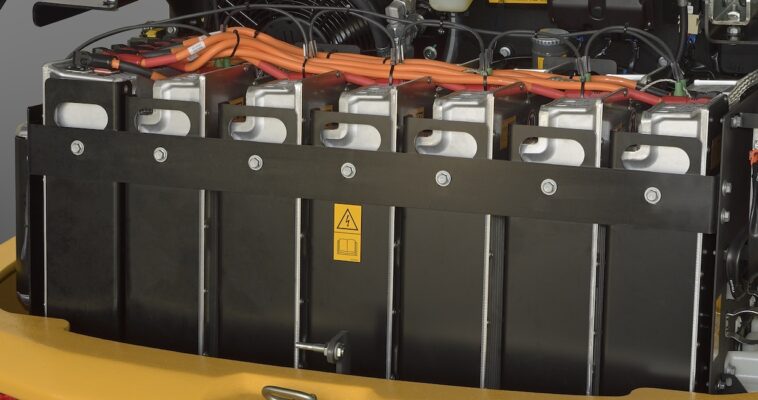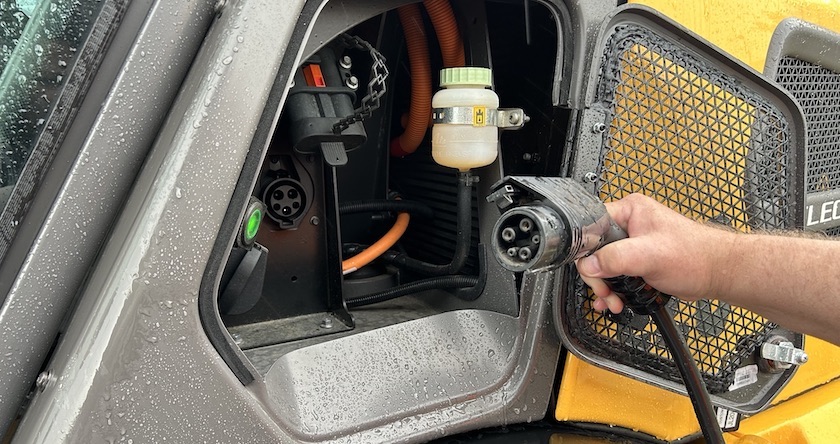
Does it perform like a diesel? How much does it cost? How long does a charge last? These are some of the most common questions we hear about battery-electric vehicles today, including electric construction equipment.
By Anna Axelsson, Volvo Energy
They’re focused on the now — for example, an electric excavator working on a site development job. And rightfully so. Electric machines are new.
But batteries bring up a whole host of questions, some of which are more about looking ahead. Is there enough charging infrastructure for me to stay charged? What happens to the batteries as they start to wear down over time? Is battery production and consumption really sustainable?
These are the questions (and more) we asked ourselves here at Volvo many years ago — and it’s why Volvo Group recently formed a new business unit to actively address them as our electrification and sustainability journey unfolds.
It’s called Volvo Energy, and everything our group does revolves around vehicle batteries. It’s our responsibility to take care of them in each step of their lifecycle.
For example, we currently have a team involved in the development of charging and infrastructure solutions here in North America and around the world to help expand charging locations.

We also have a team dedicated to monitoring and reporting on the state of charge (SOC) and state of health (SOH) of our batteries to determine how they’re performing and when they might need to be replaced — and if they do need to be replaced, where they go next.
These two groups are focused on a battery’s First Life. During a battery’s First Life, our intelligent battery management system protects the battery from excessive degradation. Our systems ensure an optimal SOC, prevent extreme temperatures and optimize charging cycles. We continuously collect data and analyze it to further improve the battery’s performance throughout its life. This work helps EV owners and operators get optimal performance, but we don’t stop there.
After a battery has been used for many years, it reaches a point where it no longer has the capacity to meet your needs. When frequently used, this commonly happens after around seven or eight years. The battery, however, still has around 80% of its total capacity left — which is more than sufficient for other uses. And that’s where our Second Life team will soon come in.
Used batteries are still valuable assets, much like a used excavator maintains value even after extensive use. Through analyses of battery data, this team will work to find the most viable second-life application for every unique battery, further extending its total life before being recycled. This process will be optimized through digitalization. The Volvo Group is currently developing a “Decision Engine” — a system that combines battery data with AI to define when a battery needs to be replaced, monitor the supply and demand of second-life batteries, and decide the best option for every unique battery unit. The Decision Engine will even monitor the logistics flow to reduce the environmental impact of transporting batteries.
When batteries reach this second life stage, our team will work to either refurbish/remanufacture, repurpose or recycle them. What’s the difference?
- Refurbishing is very similar to repair. Through refurbishment, we’ll replace faulty modules and/or other broken/worn sub-components within the battery pack to get it back to as close to new as possible. This will give you more years out of your 600-volt electric machines.
- Remanufacturing (or reman) is much more in depth. When a battery is remanufactured, we’ll break it down to the core level and every module and component will be replaced bringing the SOH back to 100%. Through remanufacturing, batteries will essentially become new again and can be sold to another customer as a reman part. The good news is we’re also working on a warranty for reman batteries similar to what we do with brand new ones.
- When refurbishment/remanufacturing aren’t options, repurposing will be another solution to extend the total lifecycle of our 600-volt batteries. The transition toward mainly renewable energy sources, such as solar and wind, requires energy storage solutions, and these large second-life EV batteries are a perfect fit. Used batteries can be a building block in a Battery Energy Storage System (BESS). BESS is an assembly of many battery packs, essentially creating one high-capacity energy storage system. Battery Energy Storage Systems can power buildings, be used for off-grid applications or store energy from renewable sources. Volvo Energy has invested in battery energy storage specialists Connected Energy as a part of securing the acceleration of our battery business.
- When a battery has been fully used (and none of the above options is viable), it will be discharged and dismantled before materials are recovered through a recycling The recycled material (cobalt, nickel, magnesium, copper and so on) will then be fed into brand new cell production to produce new batteries. This will reduce the amount of extracted material needed, which is becoming ever more challenging as countries around the world compete for limited supplies of these natural resources that are currently extracted from continents like Africa to build lithium-ion batteries.
In a linear business model, minerals used in batteries would be sourced at the beginning, produced and consumed in the middle, and ultimately thrown away at the end. This isn’t sustainable.

But in a circular business model (as shown above), we aim to connect the beginning with the end. For our North American region, that means identifying local sourcing partners, recyclers and more — who we call Enablers. These partners can source and/or recycle the minerals used in the batteries and help build new ones for consumption. From there, our teams will work with other Enablers (e.g. recycling facilities) as needed to refurbish/remanufacture, repurpose or recycle those batteries to help keep them out of our landfills.
As a part of the Volvo Group, we’re determined to ensure that all batteries powering heavy equipment, trucks and more are used to their full potential, for as long as possible. Batteries enable the transition to renewable energy sources. With sustainable end-of-life processes in place, second-life batteries can accelerate the shift toward zero emissions.
Our ultimate goals are to create a circular business model of second life batteries, reduce environmental impact and accelerate the shift toward a zero-emission future — and I think Volvo Energy is off to a great start to make these aspirations a reality.
By Anna Axelsson, Volvo Energy

